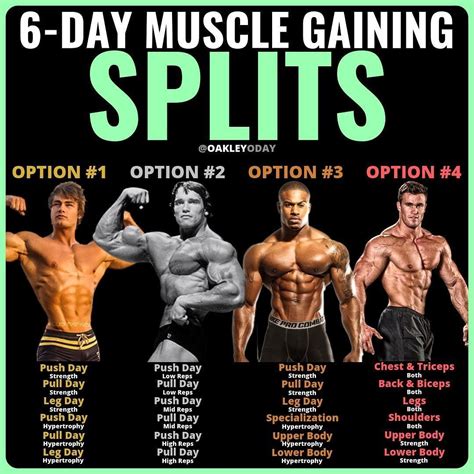How to shatter strength plateaus for peak muscle & performance gains?

Hitting a strength plateau can be incredibly frustrating. You’ve been consistently lifting, pushing hard, and seeing progress, only to suddenly find yourself stuck. Whether you’re struggling to add weight to your bench press, deadlift, or squat, a plateau signifies that your body has adapted to your current demands, and it’s time to shake things up. Overcoming these hurdles is crucial not just for physical growth but for maintaining motivation and continuing your fitness journey.
Understanding the Plateau: Why You’re Stuck
Before you can shatter a plateau, you need to understand why it’s happening. The most common reasons include:
- Adaptation: Your body has become efficient at the movements and loads you’re currently using.
- Insufficient Recovery: Not enough sleep, active recovery, or stress management can hinder muscle repair and growth.
- Nutritional Deficiencies: Not consuming enough calories, protein, or micronutrients to support intense training and muscle repair.
- Overtraining: Too much volume or intensity without adequate rest can lead to burnout and stalled progress.
- Poor Technique: Inefficient form can limit the weight you can lift and increase injury risk.
- Lack of Variation: Doing the same routine repeatedly without changing exercises, sets, reps, or tempo.

Strategic Training Modifications
Your training program is the first place to look for changes when progress stalls. Small adjustments can yield significant results.
Varying Progressive Overload
Progressive overload isn’t just about adding more weight. It encompasses various methods to continually challenge your muscles:
- Deloading: Periodically reduce your training volume and intensity for a week. This allows your body to fully recover and come back stronger.
- Increase Volume/Intensity: Experiment with dropsets, supersets, rest-pause sets, or pyramid sets to push past your typical rep range or load.
- Tempo Training: Control the speed of your lifts. Slower eccentrics (lowering phase) can create more time under tension, stimulating new growth.
- Reduce Rest Periods: Shorter rest intervals between sets can increase the metabolic stress on muscles, promoting hypertrophy.
Periodization and Program Rotation
Implementing a periodized approach, where you vary training focus over time, can prevent adaptation and promote continuous gains. Consider:
- Block Periodization: Focus on specific qualities (e.g., strength, hypertrophy, endurance) for several weeks before transitioning to another block.
- Exercise Rotation: Swap out your main exercises or accessory movements every 4-6 weeks to challenge your muscles in new ways.
- Address Weak Links: Identify specific muscle groups or movements that are holding you back and dedicate extra work to strengthen them.

Optimizing Nutrition for Growth and Recovery
Your diet fuels your workouts and rebuilds your muscles. Without proper nutrition, even the best training program will fail.
- Caloric Intake: Ensure you’re in a slight caloric surplus if your goal is muscle gain. If you’re cutting, make sure your deficit isn’t too severe to hinder recovery and strength.
- Protein Intake: Aim for 1.6-2.2 grams of protein per kilogram of body weight to support muscle repair and synthesis.
- Carbohydrates and Healthy Fats: Don’t neglect these macronutrients. Carbs replenish glycogen stores for energy, while healthy fats are vital for hormone production and overall health.
- Hydration: Dehydration can severely impact performance and recovery. Drink plenty of water throughout the day.

Prioritizing Recovery and Sleep
Muscle growth and strength gains happen outside the gym, during recovery periods. Ignoring this aspect is a surefire way to hit a plateau.
- Quality Sleep: Aim for 7-9 hours of quality sleep per night. This is when your body produces essential growth hormones and repairs tissue.
- Stress Management: Chronic stress elevates cortisol, a hormone that can hinder muscle growth and increase fat storage. Incorporate stress-reducing activities like meditation, yoga, or hobbies.
- Active Recovery: Light cardio, stretching, foam rolling, or massage can improve blood flow, reduce muscle soreness, and aid recovery.

Refining Technique and Form
Sometimes, simply improving your form can unlock new strength. A slight tweak in grip, stance, or bar path can make a significant difference.
- Video Yourself: Record your lifts and review them. You might spot inefficiencies or form breakdowns you weren’t aware of.
- Mind-Muscle Connection: Focus on contracting the target muscle during each rep. This improves engagement and can make the movement more effective.
- Seek Expert Advice: A qualified coach can identify technical flaws and provide cues to correct them.

The Mental Game: Consistency and Patience
Breaking through plateaus requires not just physical adjustments but also a strong mental resolve. It’s easy to get discouraged, but remember that progress is rarely linear.
- Stay Consistent: Adhere to your new program, nutrition, and recovery strategies diligently.
- Be Patient: Results take time. Don’t expect to shatter a plateau overnight. Celebrate small victories and trust the process.
- Set New Goals: Re-evaluate your short-term and long-term goals. Sometimes, a change in perspective can rekindle motivation.
Shattering strength plateaus is a normal part of any advanced fitness journey. By strategically modifying your training, optimizing your nutrition and recovery, refining your technique, and maintaining a resilient mindset, you can overcome these hurdles and continue to achieve peak muscle and performance gains. Embrace the challenge, learn from it, and watch your strength soar to new heights.









